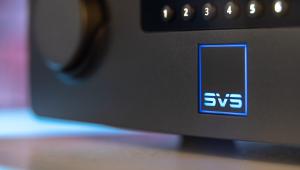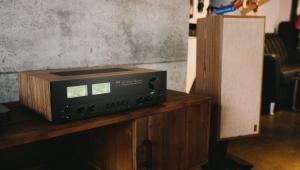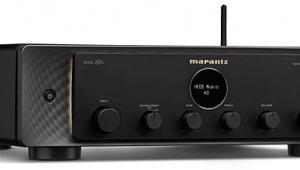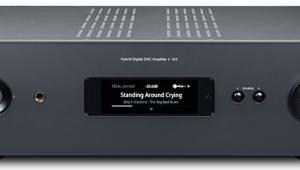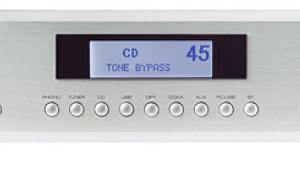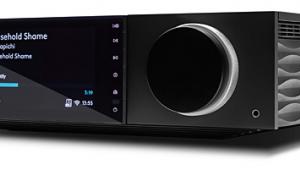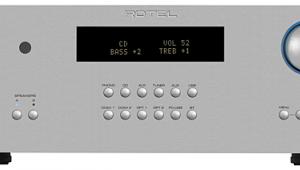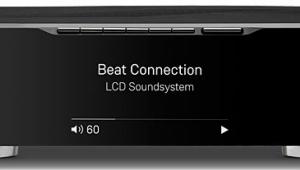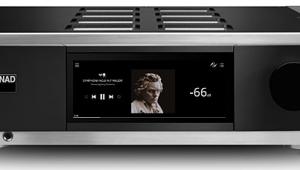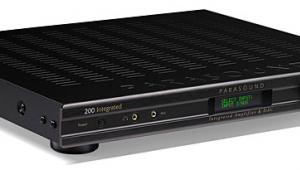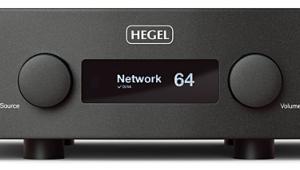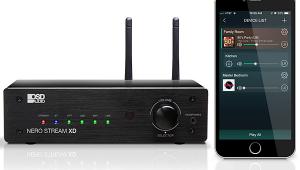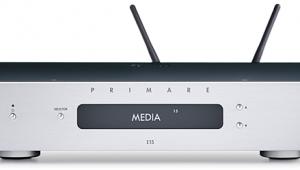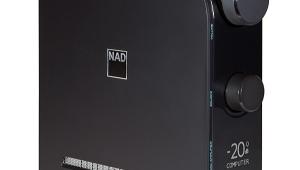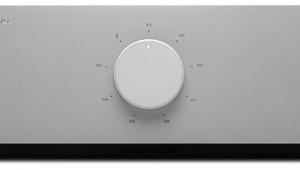Cambridge Audio Evo 150 Streaming Integrated Amplifier Review Page 2
Setup
To test the evo150, I set it up on my bedroom TV credenza, used an Ethernet cable to link it to my home network, plugged a pair of Polk bookshelf speakers into the zone A speaker terminals, and ran an RCA cable from the subwoofer output to a JL Audio Dominion d110 subwoofer. Next, I connected a Windows computer to the Evo 150's USB input and my television's HDMI ARC port to the ARC input.
All cabled up, I downloaded the StreamMagic app to my iPhone and Cambridge's Windows USB driver to the laptop. Opening the app prompted me to create a Cambridge account. I then signed in, downloaded some firmware and software updates, and entered credentials for my streaming apps. The 150's well-written manual guided me through much of this process, though I sometimes had to supplement it with information gleaned from Cambridge Audio's website.
Gazing upon the Evo 150, I was smitten with its good looks, compact size, and impeccable overall build quality. The front panel's multi-purpose dial was easy to use and the illuminated icons clearly identified the locations and functions of the various control buttons. Even in when listening in the dark, operating Cambridge Audio's integrated amp was a pleasure. As a final setup step, I replaced the Evo 150's wood side panels with the included black ones, which remained securely adhered to the chassis at all times.

Performance
Streaming the dub/reggae-blended "Amerimacka," from Thievery Corporation's It Takes a Thief (16/44.1 FLAC, Qobuz), the Evo 150 produced the unique mix of synthesized and acoustic sounds with excellent rhythmic flow and plenty of detail. Cymbals sounded clean and glistening, and sitar chords were nicely imbued with that instrument's distinctive reverberant buzz. The 150 can sound rich and harmonically full, but leans toward a sound that is detailed, alive, and dynamic. I also heard the Evo 150 produce a wide, deep soundstage with this song, along with weighty beats that integrated amps with less powerful amplifiers would likely struggle to match. Even at loud volumes, I detected no headroom issues.
Similarly impressive performance was heard when playing a download of "The Fish (Schindleria Praematurus)," from the Yes's Fragile album (16/44.1 Rhino/Elektra). The song's only lyrics are the words of its subtitle, "Schindleria Praematurus," which are collectively sung by several of the band's members. The 150 reproduced the differences between the harmonized voices and revealed the recording studio's slightly reverberant nature. Further, the bass lines of the late Chris Squire's trademark Rickenbacker 4001S were detailed, tuneful, and "spongy." The 150's handling of hi-hat and snare drum wasn't the last word in timbral accuracy, though that type of finesse is usually exclusive to much more expensive audio components.
I tested the Evo 150's HDMI ARC connection using a Roku Ultra streamer to feed a signal into my LG OLED TV. Watching the action movie Sniper: Legacy, the soundscape was suitably large. Further, dialogue was clear and the sounds of firing rifles and rocket-powered grenades were visceral, with clean transients. I was struck overall by the 150's impressive high-frequency performance: When the camera focused on a series of empty shells as they each ejected from a rifle's chamber, the resulting sound effects were detailed and metallic, yet not so sharp as to make me want to decrease the volume level.
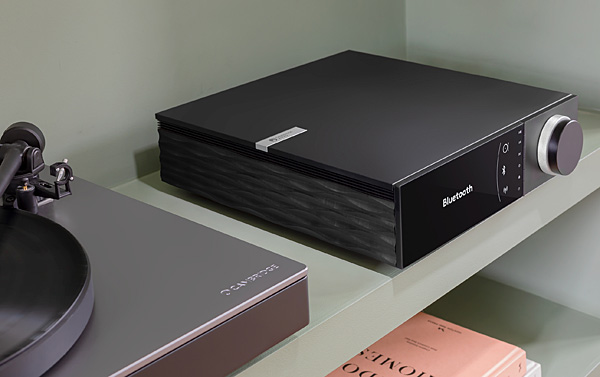
The one issue I did have with the Evo 150's performance related to its headphone output. Admittedly, headphone performance with many feature-packed one-box streaming amplifiers is lackluster, and all such players in this price class need to compromise somewhere. Still, even when using several good headphones such as the Audeze LCD-1, transparency, detail, and transient response was lacking. But as a very satisfactory workaround, I tapped the 150's Bluetooth output to wirelessly connect a pair of Audeze Mobius Bluetooth cans.
Competition
The Evo 150's many competitors include the Naim Uniti Atom ($3,290), which also has a color display and ARC input, but no built-in phono stage. There's also Linn's Majik DSM ($3,835), which has only a monochromatic display, but features a phono stage, room correction, and HDMI switching with four inputs and an ARC output. But at 40Wpc and 50 Wpc, respectively, these players offer much less amplifier power than the 150 and neither features two-way Bluetooth.
Another notable contender in the same price range as Cambridge Audio's integrated amp is NAD's $2,749 M10. This compact 100Wpc model features the company's well-regarded BluOS multi-room streaming platform, Dirac Live room correction, an HDMI eARC connection, two-way Bluetooth, and a seven-inch front- panel color touchscreen display, but it lacks the Evo 150's built-in phono stage.
Conclusion
Cambridge Audio's Evo 150 streaming integrated amplifier is a huge success by any measure. It's compact yet has a very powerful amplifier, is jam packed with features, and offers killer customizable looks. It also sounded fantastic with every speaker I paired it with. Its headphone output may be sonically uninspired, but it should satisfy casual listeners, and there's always aptX HD Bluetooth output to rely on. You could ask for more for $3,000, but as they say, "Good luck with that."

